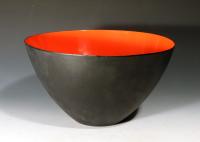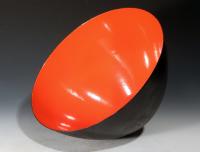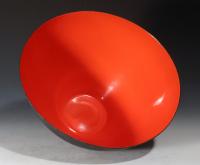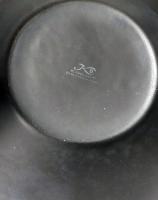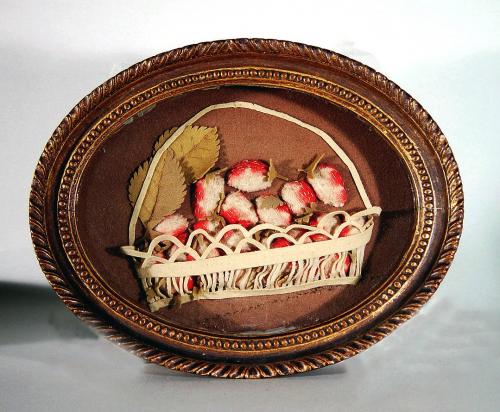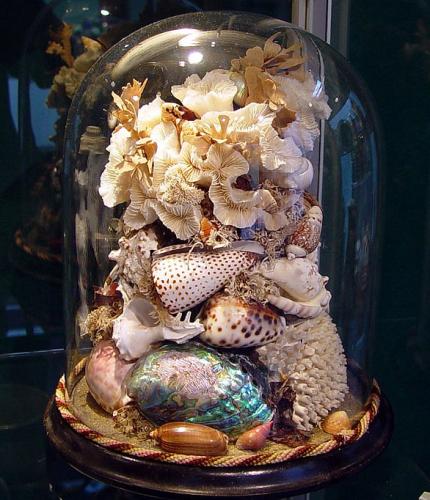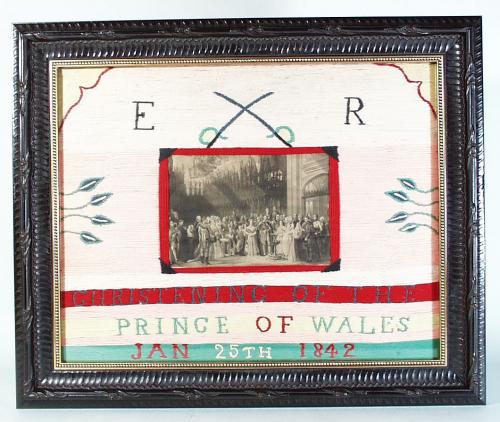
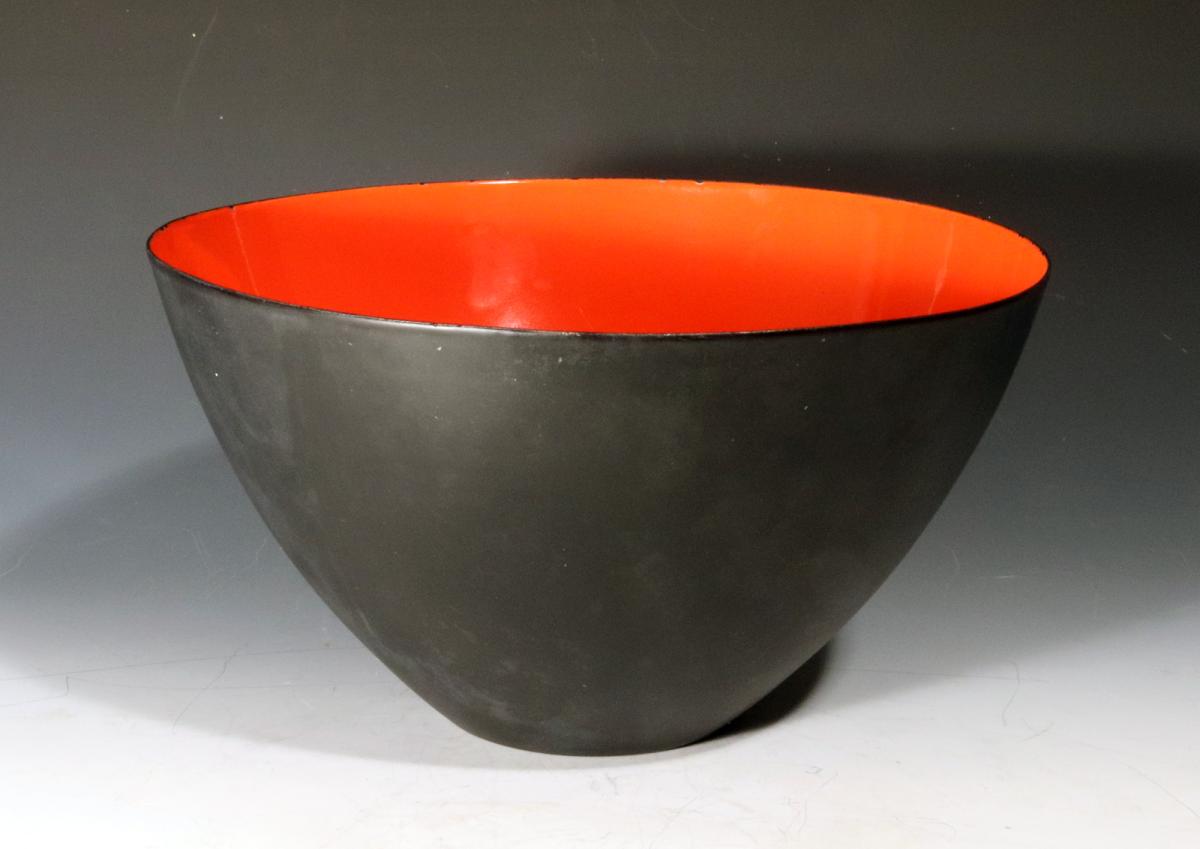
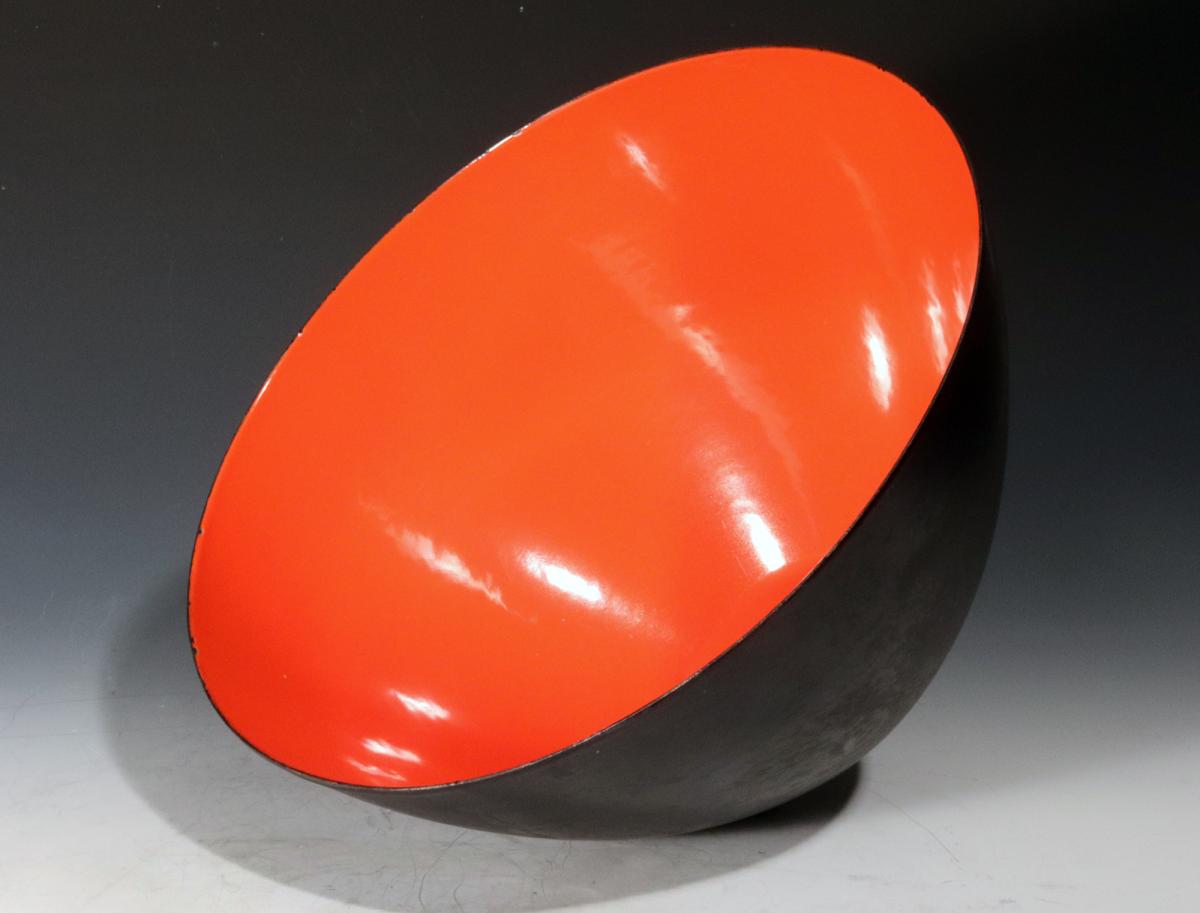
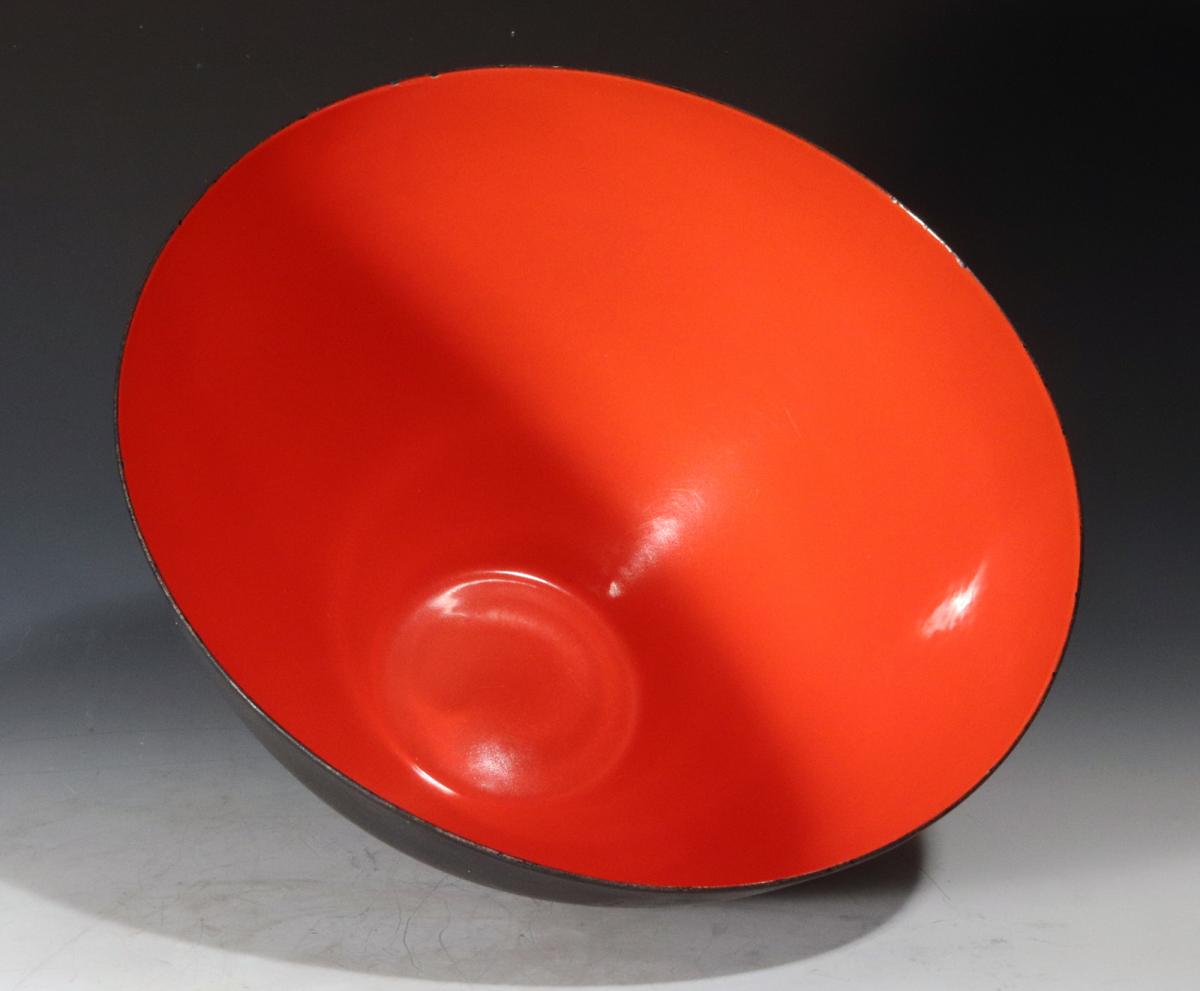
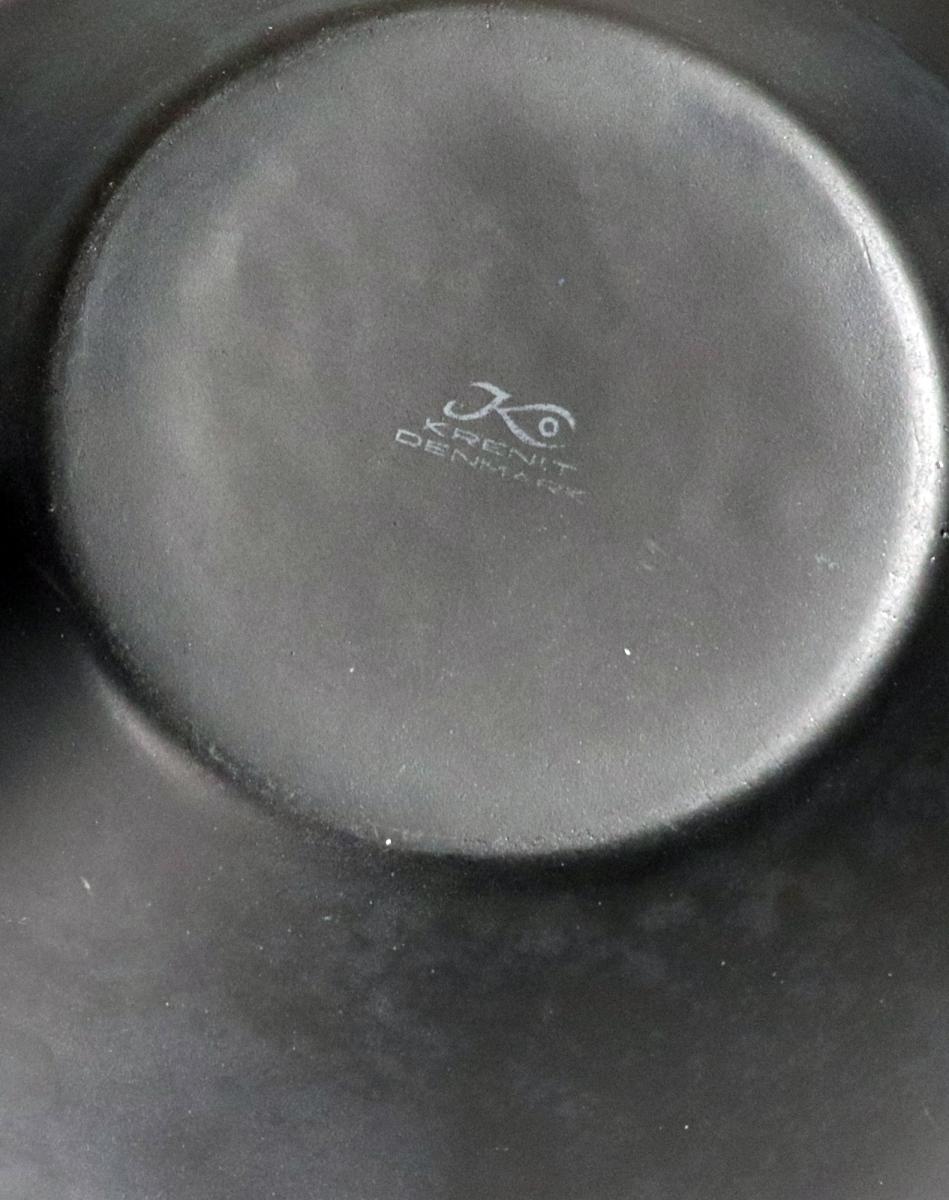
Price
£425.00This object is eligible for a Certificate of BADA Provenance
The BADA Standard
- Since 1918, BADA has been the leading association for the antiques and fine art trade
- Members are elected for their knowledge, integrity and quality of stock
- Our clients are protected by BADA’s code of conduct
- Our dealers’ membership is reviewed and renewed annually
- Bada.org is a non-profit site: clients deal directly with members and they pay no hidden fees
Modernist Kranit Bowl in Black Steel and Red Enamel,
by Herbert Krenchel for Torben Ørskov & Co.,
Enameled Steel,
Designed 1953
This 1950-60's Moderist bowl, the Krenit bowl, was designed by mechanical engineer Herbert Krenchel for Torben Ørskov who put them in production in 1953. They won a gold medal on the Milano Triennale of 1954. Our example has a tall black steel exterior and a red enamel interior.
The bowls were made in six different sizes; the smallest was about 10 cm and the largest about 30 cm. All were black outside, but in eight different colours on the inside. They were made between 1953 and 1964.
Dimensions: 9 7/8 inches diameter x 6 inches high.
Mark: A printed K with a small o/Kranit/Denmark.
With its pure and simple appearance, the Krenit bowl is a classic design piece. Designed during the Golden Era of Danish Design in the 1950s, the Krenit bowl is as contemporary today, as it was then. Follow the story of this extraordinary bowl and its creator, the Danish material scientist Herbert Krenchel.
See: The Museum of Modern Art for an example, Object number 1307.2001.1-5 (https://www.moma.org/collection/works/4670). This has the same paper label as our example and is dated 1953.
Reference:
The Story of an Extraordinary Bowl, by Normann Copenhagen (https://www.dwell.com/article/the-story-of-an-extraordinary-bowl-acc7b852).
Driven by his fascination with materials and the Danish design traditions, the material researcher and scientist Herbert Krenchel, became a designer almost by chance. His obsession with finding the perfectly thin edge - resembling a millimeter thin steel plate - lead him to design the iconic Krenit bowl in 1953. With a background as civil engineer and material scientist, I have always had a fascination for materials. It was just that fascination - almost an infatuation - with materials that led me to design the Krenit bowl, he says.
Following the example of the USA, where it has been highly popular to eat green salad, the leafy greens also became a popular meal in Denmark in the 1950s. This created a demand for new ways of preparing and presenting food.
Herbert Krenchel became so inspired by the demand for a new salad dish, that he went home to work on a new design for such a bowl himself. Soon, the first Krenit bowl was born, which he named the C-bowl (ø 12,5 cm).
Herbert Krenchel’s desire was to make a beautiful piece of craftsmanship that would be used in the kitchen as well as on the dining table; a design piece that would exude high quality and exclusivity.
I am excited about shapes and structures. The surface on a design object is important because it makes people want to reach out for it. I also believe that there has to be a balance between function and aesthetics. A good design must therefore contain more than one aspect to make the perfect overall impression Herbert Krenchel stated.
As a material scientist, Herbert Krenchel knew from his work that enamel was a durable and strong material that also had a smooth and shiny surface. Herbert Krenchel felt very inspired by enamel material, as it seemed to fulfil the requirements he envisioned for the bowl.
At the time, enamel was was not a very expensive or exclusive material and typically used for chamber pots, soap dishes and water jugs. The procedure Herbert Krenchel had in mind, was entirely unheard of.
Yet, he found a way to make it work! With a new technique that Herbert Krenchel developed himself, the bowl got a colorful and pleasantly polished layer of enamel that evenly spread on the inside, while the outside had a black matte finish.
After Krenit was launched in 1953 in Denmark, it did not take long until the bowl became renowned internationally, won design awards, and was displayed in international design exhibitions.
In 1964, the production of the Krenit bowl stopped. By that time around 1 million bowls had been produced since 1953. From then on, Krenit was only available through auctions and flea markets, and was traded all over the world.
It was in 2007, when Herbert Krenchel and his family approached Normann Copenhagen and wished for them to resume the production of the Krenit bowl. This year, the Krenit bowl was launched in new metallic shades of gold and silver, inspired by an original design made by Herbert Krenchel in the 1950s with real silver. Jan and Poul loved the shine and exclusive appearance of the metallic version, and added a new version of the Krenit bowl in the glistening gold and silver.
(Ref: NY10309-cux)
Dimensions
25.10cm diameter x 15.24cm highStock number
NY10309-cuxThe BADA Standard
- Since 1918, BADA has been the leading association for the antiques and fine art trade
- Members are elected for their knowledge, integrity and quality of stock
- Our clients are protected by BADA’s code of conduct
- Our dealers’ membership is reviewed and renewed annually
- Bada.org is a non-profit site: clients deal directly with members and they pay no hidden fees


